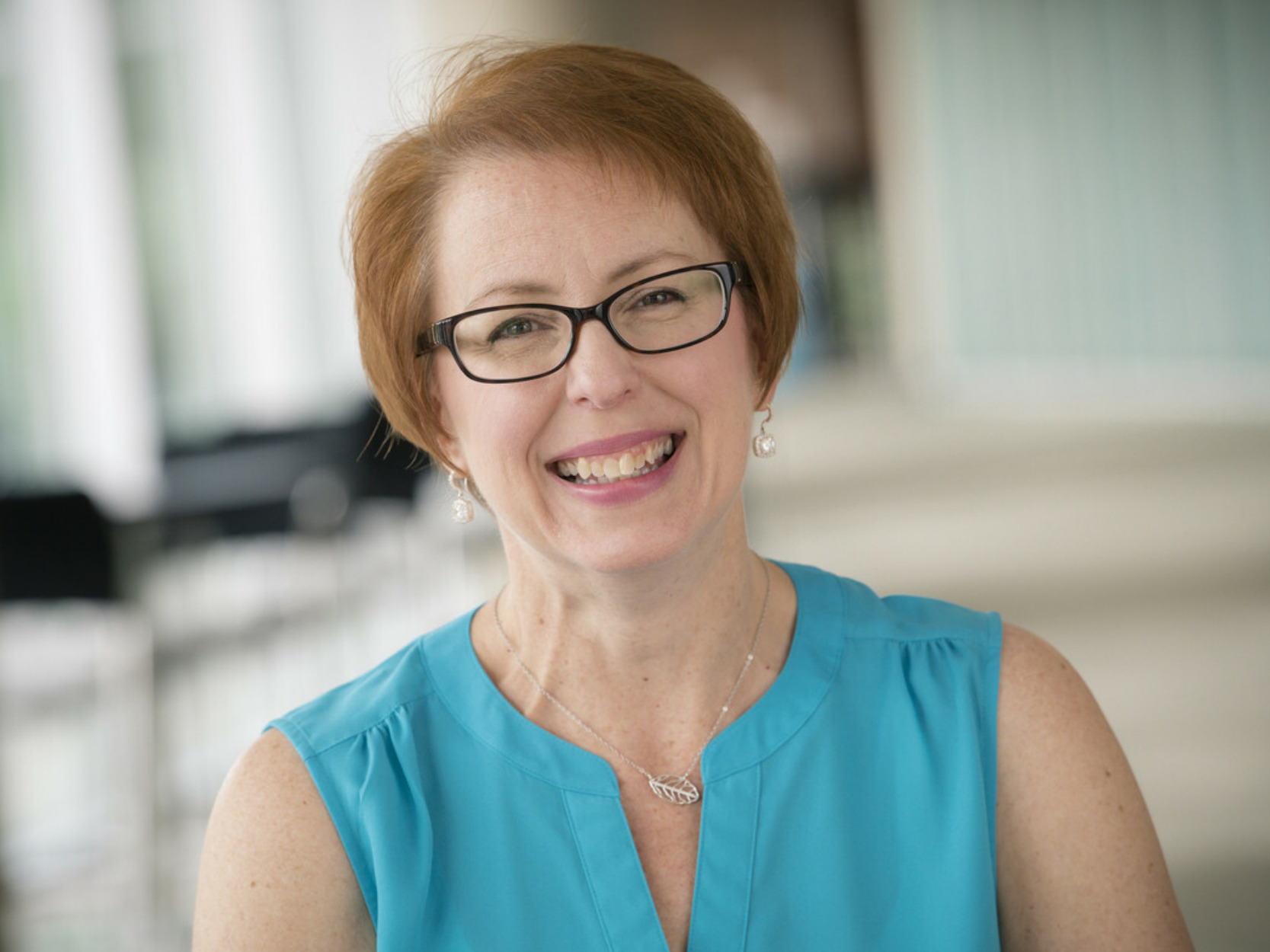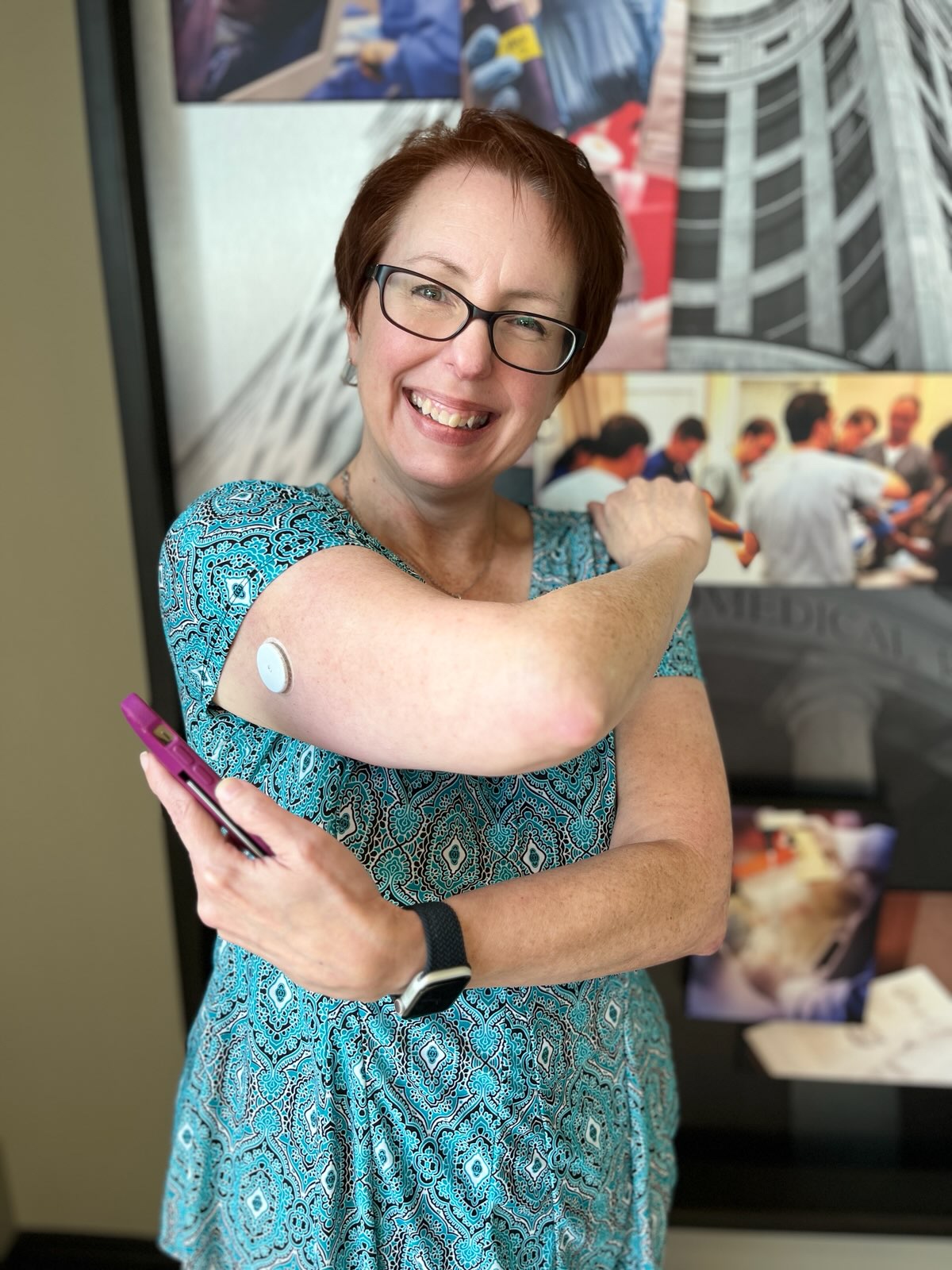 The year was 1997, and now UAB Department of Medicine Communications Director Carolyn Walsh was beginning her morning routine in preparation for her morning commute. She had gone for a walk, eaten a bowl of cheerios, and had a banana — one might say a generally healthy start to the day.
The year was 1997, and now UAB Department of Medicine Communications Director Carolyn Walsh was beginning her morning routine in preparation for her morning commute. She had gone for a walk, eaten a bowl of cheerios, and had a banana — one might say a generally healthy start to the day.
Walsh was traveling on i459 when things did not feel quite right. She was fighting to stay awake at the wheel, noticing bouts of drowsiness on and off. Before she could pull over, Walsh was in a car accident. Besides a scare, all parties involved were okay.
The accident was a wakeup call. Walsh sought answers to her dangerous drowsiness and received a surprise diagnosis by her general physician: Type 2 diabetes.
She recalls, “They told me my fasting blood sugar was 326 mg/dL, which is about three times the normal level, but all I really knew about diabetes at the time was that you ‘weren’t supposed to eat sweets!’”
Initially, Walsh and her physician experimented with medications like Metformin and Actos to regulate her blood sugar, but the condition was challenging to manage. She started viewing carbs as the enemy and alternated between being disciplined and undisciplined in her approach to nutrition. In general, Walsh felt like diabetes controlled her, instead of the other way around.
That’s when Walsh first saw an endocrinologist — a physician dedicated to the treatment of diseases like diabetes. She was put onto insulin injections immediately, which she notes was the best thing that she ever did for her health.
“Seeing someone who specializes in your specific condition is a smart step in managing your health,” said Walsh. “After I met with an endocrinologist, I began regularly measuring my blood sugar through a finger stick. It was a pain to have to poke my finger every day, multiple times a day. It’s easy to get tired of the hassle and start rationalizing ways to skip it.”
When Walsh and her husband moved, continuing to see her endocrinologist got difficult, so Walsh found a general practitioner who was closer to her new home. They were both excited to try a promising new class of medication to help her manage her blood sugar. The SGLT2 inhibitor was working well for other Type 2 diabetics, and Walsh filled her new prescription right away.
A few months after she started taking the new medicine, Walsh woke up feeling unwell. Nauseated and fatigued, she went back to bed instead of heading to work. When her husband came in to check on her, Walsh was panting and weak. Alarmed, her husband rushed her to UAB Hospital Highlands.
After they checked in, Walsh blacked out in the waiting room. The team at Highlands quickly recognized that Walsh was facing a potential deadly condition that required immediate treatment: diabetic ketoacidosis. Her cells weren’t converting blood sugar into energy, so her liver began to break down fat for fuel.
“The process generates acids called ketones. They built up in my blood, making it acidic. Thankfully, I had great care and recovered after just a few days in the hospital,” Walsh said.
After she was released, Walsh contacted the endocrinology experts at UAB, to help her understand the dangerous health scare. In late 2015, she received new insight into her condition through a more personalized and specific diagnosis: latent autoimmune diabetes in adults (LADA), not Type 2 diabetes as she originally thought.
LADA is a slower-progressing auto-immune form of diabetes, meaning the insulin-producing cells in her pancreas were being damaged but at a slow rate. The form of diabetes is a subtype of Type 1 diabetes, and the SGLT2 inhibitor she had been taking was not designed for treating Type 1 or LADA. “Again, having a specialist to help me take better care of myself was a game changer,” Walsh said.
 In 2017, Walsh also started receiving nutrition counseling from UAB Division of Endocrinology, Diabetes, and Metabolism and Comprehensive Diabetes Center Member Amy Warriner, M.D., which she notes was a big step forward in her journey with diabetes.
In 2017, Walsh also started receiving nutrition counseling from UAB Division of Endocrinology, Diabetes, and Metabolism and Comprehensive Diabetes Center Member Amy Warriner, M.D., which she notes was a big step forward in her journey with diabetes.
Now, Walsh feels like she is at a manageable place with her disease with her care team. Through a tap of her phone to her glucose meter placed on the back of her arm, Walsh can easily monitor her blood sugar when going to dinner with friends, walking at one of the many parks around Birmingham, or visiting the art museum. As she records, it can show her weekly and monthly averages.
“Establishing a better relationship with diabetes has been revolutionary for me,” said Walsh. “Having access to some nutrition counseling and improved monitoring has been a game changer, and of course, physical activity and exercise is the most important habit to cultivate. It may be really hard, but without it, you can’t sustain your long-term goals.”
For Walsh, working for an institution that is on the forefront of diabetes research and treatment — through units like the UAB Comprehensive Diabetes Center (UCDC) as well as the Division of Endocrinology, Diabetes, and Metabolism — means something personal.
“My connection is very personal. I received life-saving care here at UAB and the follow up transformed how I live with diabetes. And, at every step of the way, people have been rooting for me to be healthy,” said Walsh. “When I show up in clinic and in the nutrition counseling sessions, they behave like a community of support for me. Absolutely, I’ve got skin in this game, and they do too. I hope we win the fight together.”
As we recognize November as Diabetes Awareness Month, Walsh reminds us of the importance of celebrating those with diabetes as a whole person, while also advocating for furthering research toward curative therapies and improving treatment options.
“Every day is Diabetes Awareness Month for those diagnosed with diabetes — we live with it and manage it daily. But, you don’t have to consider yourself a diabetic, you can be a whole person with diabetes,” said Walsh. “I would love for more people to participate in diabetes research in the ways that they can: by volunteering to be part of a study or by contributing their resources to further research. It’s an exciting time, we’re closing in on a cure.”
The UCDC is a University-Wide Interdisciplinary Research Center comprised of over 200 faculty members from 10 different schools and many departments. It also serves as the umbrella for various research programs and awards; including the prestigious P30 Diabetes Research Center (DRC), U01 Human Islet Research Network (HIRN) grants from the National Institute of Health (NIH) and several research core facilities.
